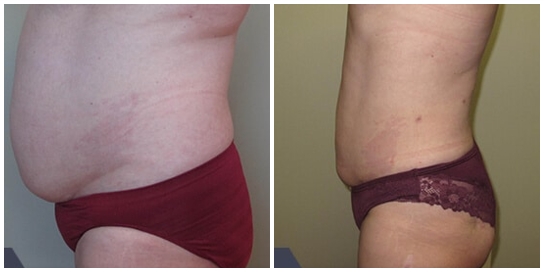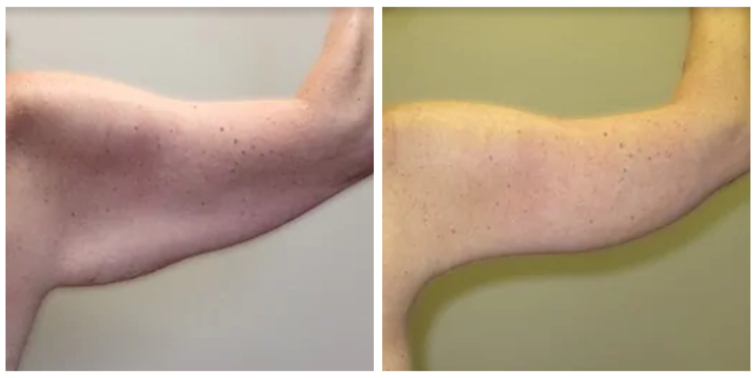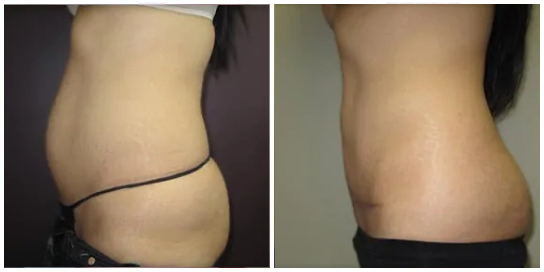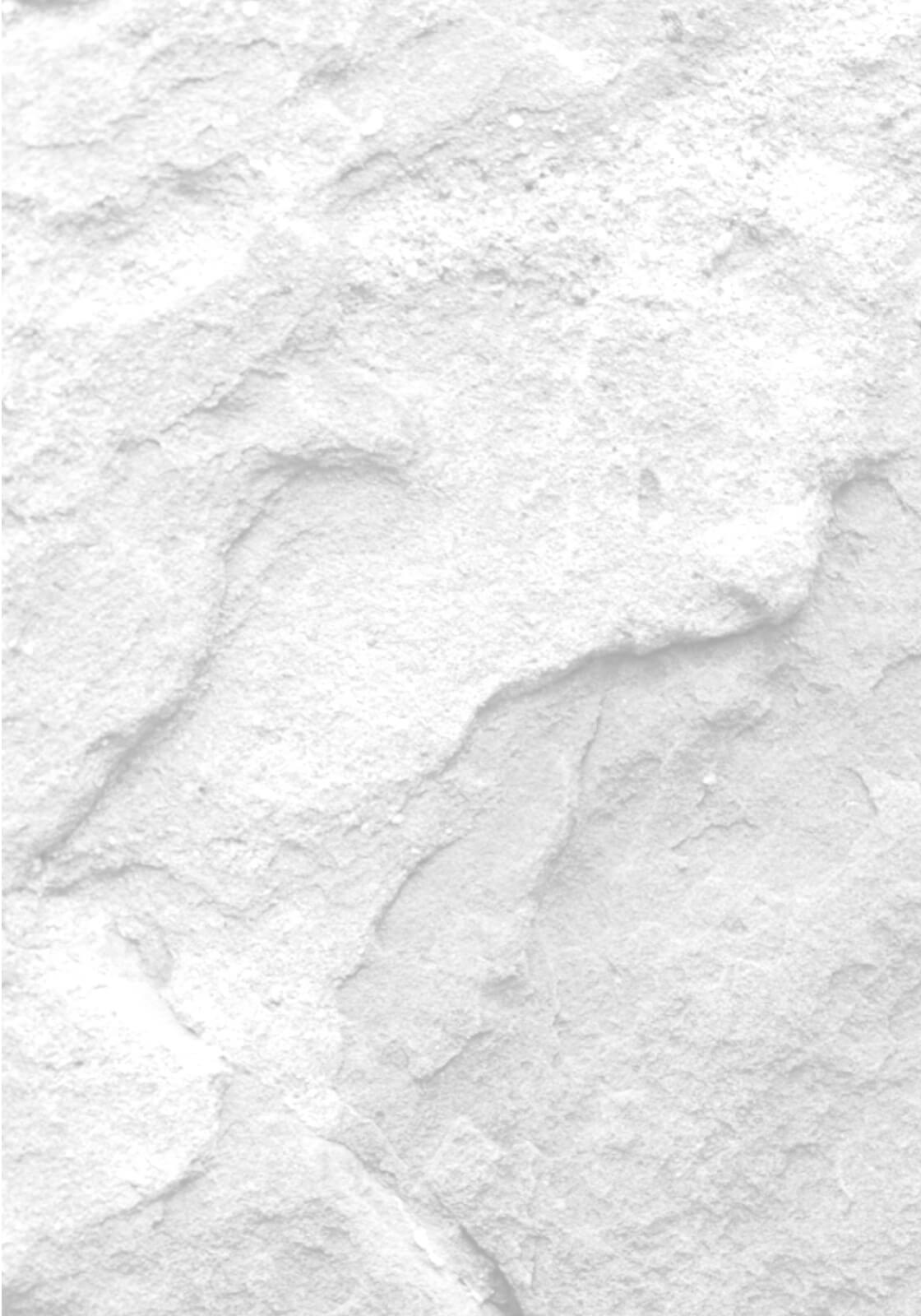Thigh Lift
Conveniently located to serve the areas of Boulder, CO

A thighplasty, commonly known as a buttock or thigh lift, is a surgical procedure which lifts and tightens loose skin, improving the contour of the thigh and buttock area.
Contents
Who is a good candidate for a thigh lift?
Candidates must be in good health, have no active diseases or serious, pre-existing medical conditions, and must have realistic expectations of the outcome of the surgery. This procedure is not a treatment for obesity or a substitute for proper diet and exercise. A thigh/buttock lift is ideal if you are self-conscious about your lower body appearance and:
- You have lost some skin elasticity in your thigh, hip, or buttock areas.
- Your skin area sags or has an “orange peel,” or dimpled appearance.
- The appearance of your thigh improves dramatically when you lift the lax skin.
NOTE: You may not be a candidate for surgery if you smoke, have recently quit smoking, or if you are exposed to second-hand smoke. Primary and secondary smoking decreases blood flow to the body’s tissues. This can result in prolonged wound healing, skin loss, infection, increased scarring, and a number of other complications depending on the kind of procedure performed.
How is a buttock lift performed?
Your surgeon will work with you during your initial consultation to determine which procedures will be most effective in achieving your desired result. There are many possible variations in the procedure to meet clothing or personal desires. To lift the inner thighs, short incisions are made extending from the back of the thigh/groin crease around to the buttock crease. If desired, side or back thigh lifts may be performed as separate procedures. Lifting the entire thigh and buttock (also known as circumferential lower body lift) requires much longer incisions. These incisions are made starting in the buttock crease, then extending around the groin, up and over the side of the abdomen, over the flank and then across the back.
Mommy Makeover

Many women elect to have multiple plastic surgery procedure performed at once. There are many reasons for doing so. First, it costs less than having them performed separately. You will only incur one surgical center expense and only one anesthesia expense. You may also save money on pain medication, if needed. One of the most popular plastic surgery procedure combinations in recent years has been the Mommy Makeover. This procedure involves full body contouring and may be a combination of breast augmentation with/or mastopexy (breast lift), tummy tuck (abdominoplasty), and liposuction. It restores youthfulness to the whole body, from your breasts down to your hips.
Planning for Your Operation
Communication is vital in establishing realistic expectations and reaching your goals. You will have the opportunity to discuss your goals and the results you’d like to achieve. Your surgeon will work with you to reach an understanding about what you can expect from this procedure and what long-term benefits you will experience. Every patient is different, and your surgeon will choose the surgical technique and treatment plan that is right for you.
During your initial consultation
- Provide a complete medical history. Include information about any previous surgical procedures; past and present medical conditions; and all medications or herbal supplements you are taking.
- Expect your surgeon to examine to conduct a complete physical examination.
- Be prepared to discuss possible risks and complications of the procedure.
Preparing for your operation
You will be given specific instructions on how to prepare for your surgery. A pre-operative information packet will be provided that explains everything you should do and know before your surgery date. Your surgeon will instruct you on how to prepare for surgery, including guidelines on eating and drinking, smoking, and which vitamins and medications should be taken or avoided. You should arrange for someone to drive you home after your surgery, whether your surgery is done on an outpatient or inpatient basis. You may also want to make arrangements for someone to help you out for a day or two after you leave the hospital.
Where your procedure will be performed
The majority of these procedures are completed on an out-patient basis.
Types of Anesthesia
In most cases, general anesthetic is used so that you will sleep and remain comfortable throughout the procedure.
After Your Surgery
It is very important that you follow your surgeon’s instructions. This will promote healing and improve progress towards your new physical appearance. Also, it is important that you attend all scheduled follow-up appointments so that your surgeon can assess your long-term results and answer any questions or concerns you may have.
Post-op instructions
- Have someone drive you home after surgery and help you at home for 1-2 days.
- Get plenty of rest.
- Follow a balanced diet.
- You may want to add more raw fruit to your diet and increase fluid intake in order to avoid constipation.
- Take pain medication as prescribed. Do not take aspirin or any products containing aspirin.
- Do not drink alcohol when taking pain medications.
- Alcohol causes fluid retention. Even when not taking pain medications, avoid alcohol for 3 weeks.
- If you are taking vitamins with iron, resume these as tolerated.
- Smoking delays healing and increases the risk of complications. Do not smoke.
Activities
- Start walking as soon as possible. This helps to reduce swelling and lowers the chance of blood clots.
- Do not drive if you are taking any pain medications.
- Do not drive until you have full range of motion with your arms.
- Do not lift anything greater than 5 lbs. for 6 weeks.
- Sexual activity may be resumed as comfort permits, usually 2-3 weeks.
- Avoid straining the thigh and buttock muscles. Restrict strenuous exercise and activities for 6 weeks.
- Return to work in 2-4 weeks.
Incision care
- You may shower 48 hours after removal of the drainage tubes.
- Avoid exposing scars to sun for at least 12 months.
- If sun exposure is unavoidable, use a strong sunblock (SPF 30 or greater).
- Keep steri-strips on; replace them if they come off.
- Keep incisions clean and inspect daily for signs of infection.
- Do not soak in tub while sutures or drains are in place.
- Soft support underpants may be worn, and you may pad incision with dressings for comfort.
- Sleep with a pillow under your knees and with your head elevated on 2 pillows.
What to expect
- You may experience temporary pain, soreness, numbness of thigh and buttock skin, or discomfort in the incision area.
- Maximum discomfort will occur during the first few postoperative days.
- You will have bruising and swelling of the lower back, thigh, and buttock area. The majority of bruising and swelling will subside in 6-8 weeks.
- You may feel tired for several weeks or months.
Appearance
- You should notice improvement in the contour and shape of the thigh and less sagging of the buttocks.
- You will walk slightly bent forward and gradually return to normal posture over next 3 weeks.
- Scars will be reddened for 6 months, after which they will fade and soften.
- The scar will extend from near one hipbone to the other, low on the abdomen.
Follow-up care
- Drains will be removed when they produce less than 30 ml of fluid for 24 hours.
- Surface stitches will be removed after 7-10 days.
- A support garment may replace dressing on incision.
When to call
- If you have increased swelling or bruising.
- If swelling and redness persist after a few days.
- If you have increased redness along the incision.
- If you have severe or increased pain not relieved by medication.
- If you have any side effects to medications; such as, rash, nausea, headache, vomiting.
- If you have an oral temperature over 100.4 degrees.
- If you have any yellowish or greenish drainage from the incisions or notice a foul odor.
- If you have bleeding from the incisions that is difficult to control with light pressure.
- If you have loss of feeling or motion.
Schedule your Appointment
And Meet Directly With Dr. Roesner to Discuss a Treatment plan to meet your Aesthetic and Skincare Goals.
Schedule AppointmentConsult fee is $100 – which will be applied to the cost of the procedure
(If scheduled within 90 days).





